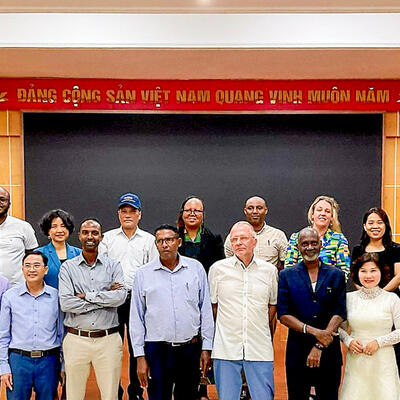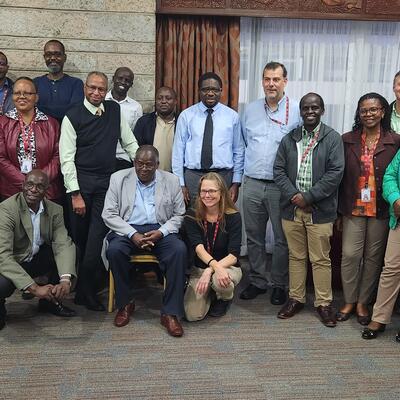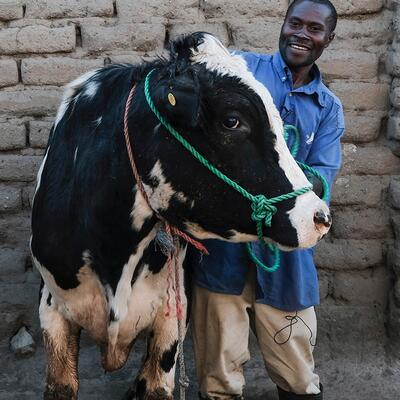
Mrode’s article about increasing productivity gains through genomic prediction is selected as an Editor’s Choice in JDS
Raphael Mrode’s article, ‘Genomic prediction of crossbred dairy cattle in Tanzania: A route to productivity gains in smallholder dairy systems’, was selected as an “Editor’s Choice” in the November issue of the Journal of Dairy Science. Mrode is a principal scientist in quantitative dairy cattle genetics at the International Livestock Research Institute (ILRI). His article, which examines the use of genomic best linear unbiased prediction (GBLUP) and single-step GBLUP to estimate the accuracy of genomic predictions for daily milk yield and body weight in Tanzania with information from the African Dairy Genetic Gains (ADGG) project, will be featured on the journal’s homepage throughout the month of November and be freely accessible in the Editor’s Choice Collection.
Mrode’s article, which draws on data collected by the ADGG project, evaluates two methods of genomic prediction: Genomic best linear unbiased prediction and single-step genomic best linear unbiased prediction (ssGBLUP)—which use a genomic relationship matrix—to determine their accuracy. These statistical methods generate estimations of the genetic value of animals by using information from the genes of animals combined with pedigree. By doing this, they can determine the relationship among animals and predict their genetic merit. Mrode specifically assessed dairy cattle.
Genomic predictions have previously been limited by insufficient data, particularly in developing countries. The study found that the average milk yield and body weight for cows showed greater productivity results when they had higher levels of exotic genes. This was especially the case regarding milk yield.
Mrode’s analysis also found moderate-to-high levels of accuracy using both models, demonstrating that making selections based on genomic predictions is a feasible and realistic pathway for achieving genetic gains and greater productivity among smallholder dairy farms in the long-run. It also outlines a clear mechanism for this to happen—starting with genotyping animals in the early stages of breeding improvement programs. Once the foundation has been set, systematically establishing a record of pedigree information, like the ADGG has done, can lead to improved dairy cattle among farmers.
The successes of genomic selection have been observed in countries like the United States, where genetic gains for milk, fat and protein yields increased two-fold following its implementation. The obstacle for developing countries has been a lack of pedigree data, but Mrode suggests that there is a tremendous opportunity for cattle improvement in these countries if smallholders are able to predict the genetic potential of their cattle.
For East Africa, the African Dairy Genetic Gains project has made headway to achieve this. Funded by the Bill and Melinda Gates Foundation and initiated in 2016, the project began by introducing a digital system of dairy performance data collection in Tanzania, and now catalogues genetic information about cattle for Tanzania and Ethiopia. The ADGG, which records and analyses the information that is then used by farmers to inform decision-making, is not just a vehicle for genomic prediction and selecting crossbred cattle, but also provides information to farmers about breeding and animal health service providers.
Mrode’s honour was recognized by the editor-in-chief of the Journal of Dairy Sciences and the American Dairy Science Association, Paul Kononoff, who congratulated him on the achievement of his article.
Further Reading:
To learn more about the African Dairy Genetic Gains Project, click here
To learn more about the Livestock Genetics program at ILRI, click here
To read Dr. Mrode’s article, click here


















